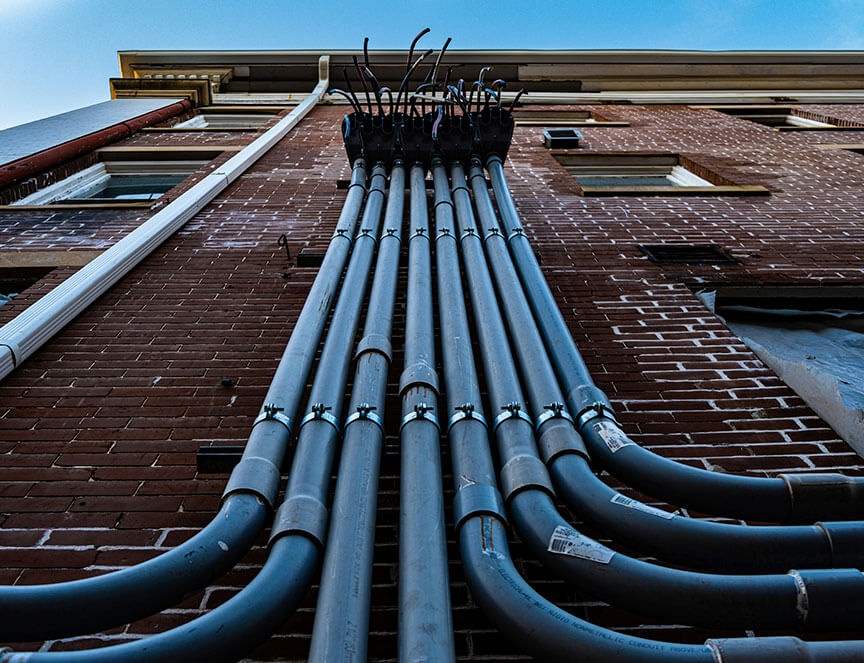From Will at Flowtec Plumbing & Gas, Adelaide
Blocked drains—yep, we’ve all been there. They’re like the common cold of plumbing. Some are a minor inconvenience, others completely throw your day off. Whether it’s a slow sink or a full-on backup, one thing’s for sure: if you’ve got drains, you’ll eventually have to unblock one.
Here are my go-to tips to help you handle it before you need to call in the pros (aka us).
1. Start with Prevention
I always say prevention is cheaper than the callout fee. The kitchen sink cops a lot—food scraps, coffee grounds, even the odd bit of steel wool or broken glass. A drain sieve is your best mate here. Same goes for the bathroom: grab that hair out of the shower drain before it turns into a furball. And please, don’t flush dental floss, wipes, or your kid’s action figure. A small bin next to the toilet can save you a world of pain.
2. Try Hot Water
Hot water can do wonders for loosening up greasy kitchen gunk. Just pour it (carefully!) down the sink. It won’t fix major clogs, but it might get things moving. And don’t burn yourself—let’s not turn a plumbing issue into a hospital trip.
3. Plunge It Out
Old-school plungers still get the job done. Every household should have one. Give it a few solid pumps over the drain—sometimes that’s all it takes to shift a blockage. Pro tip: Do this before you add any chemicals. Mixing a mystery cocktail in your pipes is never a good idea.
4. Bicarb & Vinegar Hack
This is the classic DIY trick. Pour a cup of bicarb soda down the drain, followed by a cup of vinegar. Let it fizz away for a few minutes, then flush it with hot (not boiling) water. It’s simple, eco-friendly, and surprisingly effective for mild blockages.
5. Use a Drain Auger (If You’re Handy)
Also known as a plumber’s snake or electric eel, this is the tool we use to dig deep. It’s great for breaking up stubborn clogs and scraping out build-up. But be warned—if you’re not confident with tools, this one can get messy fast. Call us instead, and we’ll bring the proper gear.
6. Tackle the U-Bend
If you’re okay getting your hands dirty, the U-bend (under the sink) is a common trouble spot. Pop a bucket underneath, unscrew the pipe, and check for trapped gunk. It’s not the most glamorous job, but it’s often where the blockage is hiding. Don’t wear your best threads for this one.
Bonus Round: Using Chemicals Like Drano
Products like Drano, caustic soda or hydrochloric acid can be effective—but they’re not toys. Always follow the instructions, use gloves, and never mix chemicals or add boiling water. And make sure they’re kept far away from kids and pets. If in doubt, leave this one to us
Still Blocked?
If none of the above does the trick, that’s where we come in. At Flowtec Plumbing & Gas, we’re available 24/7 across Adelaide. Whether it’s an emergency or you just want it sorted quickly and properly, give us a call.
📞 Call Will at Flowtec: 0488 097 697
FAq's

What are the three most common types of plumbing in a home?
- Water Supply Lines:
Carry drinking water from the mains to faucets, showers, toilets, and other points of use. - Drain, Waste, and Vent (DWV) System:
Removes wastewater and gases from the sewer system, properly venting them to the outdoors. - Gas Lines:
Distribute natural gas or propane to appliances such as stoves, water heaters, and space heaters.
What are the most common types of pipes and fittings in home plumbing?
1- Pipes:
- Copper: Durable and corrosion-resistant. It is ideal for hot and cold water.
- PVC (Polyvinyl Chloride): It is inexpensive and common in cold water and drainage systems.
- PEX (Cross-linked polyethylene): It is a flexible and easy-to-install material. It is suitable for hot and cold water.
- Galvanized steel: It was once commonly used, but is now being replaced due to its tendency to corrode.
- ABS (Acrylonitrile Butadiene Styrene): This black plastic pipe is used in drains and ventilation.
- CPVC (Chlorinated PVC): It is very similar to PVC, but it resists high temperatures. It is very useful for hot water.
- Stainless steel: This type of pipe is highly resistant to corrosion and can be used in a variety of ways in the home.
- Black pipe: This is used for gas lines.
2- Fittings:
- Elbows: These change the direction of water flow.
- Couplings: Used to join two straight sections of pipe.
- Tees: Create a branch or branch in the line.
- Reducers: Used to connect pipes of different sizes.
- Unions: These facilitate easy disassembly.
- Bushings: Help reduce a larger pipe to a smaller one.
- Adapters: These allow connecting pipes of different materials.
- Caps: Allow the end of a pipe to be sealed.
- Plugs: Allows the sealing of a threaded opening.
- Flanges: Help connect pipes to equipment or systems.



